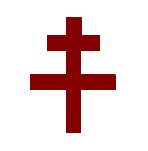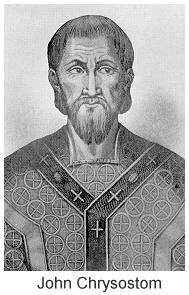|
 The Eastern Church The Eastern Church
With their differing emphases, the Eastern and Western wings of the church gradually grew further apart, the Eastern church developing its own traditions of spirituality, worship, and church life.
From the time of the Council of Chalcedon, two traditions were developing, one centered on Rome, the other on Constantinople. For the Eastern church, the pattern was set by the Emperor Constantine, who chaired the Council of Nicaea, guaranteeing the church's unity but at the price of its independence. The  bishop of Constantinople operated under the direction of the emperor. Those who, like John Chrysostom, criticized the emperor, were punished - as he was, by execution. bishop of Constantinople operated under the direction of the emperor. Those who, like John Chrysostom, criticized the emperor, were punished - as he was, by execution.
Threats
As the Eastern and Western church grew apart, so did their answers to theological questions. In the East, discussion of the nature of Christ emphasized His divine side.
The Eastern Church faced a greater threat than the West. After the return of Muhammad to Mecca in AD 622, Islam grew rapidly, and with great hostility toward the Christian church. Islamic forced under the leadership of Abu Bakr swept through the east, engulfing the lands of Egypt, Syria, Palestine, and many of the Mediterranean islands. The Christian church suddenly found itself again facing persecution, whereas the Western Church experienced its impact only as the Muslims moved along the North African coast, taking the former strongholds of North African Christianity.
|
